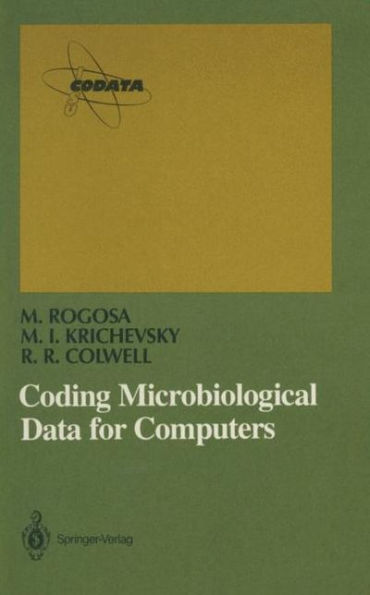Coding Microbiological Data for Computers
As the title suggests, this book presents an open ended system in which computer techniques facilitate encoding, entry, management, and analysis of microbiological data derived from the study of bacteria, algae, fungi, and protozoa. The system is not constrained by any taxonomie point of view or proprietary computer technology and is freely and easily adaptable to the special needs of special problems. This enables investigators to deal efficiently with unforeseen areas of their investigation or with new data generated by old or new technology. We are sincerely grateful for the invaluable advice and encouragement of Professor V.B.D. Skerman. Many individuals contributed ideas and technical knowledge, and users of the system have contributed data and responsive criticism for more than a decade. Particularly, we acknowledge Lesley Jones for some editorial help; Keith E. McNeil for contributions to Section 7; Elwyn G. McIntyre for invaluable assistance with Section 8; Dr. B. Amdur for major contributions to Section 21; Dr. A.J. Wicken for assistance in expanding and updating Section 23; Dr. S. Feingold for some features of anaerobic bacteria in Section 24; Drs. J.
1029887895
Coding Microbiological Data for Computers
As the title suggests, this book presents an open ended system in which computer techniques facilitate encoding, entry, management, and analysis of microbiological data derived from the study of bacteria, algae, fungi, and protozoa. The system is not constrained by any taxonomie point of view or proprietary computer technology and is freely and easily adaptable to the special needs of special problems. This enables investigators to deal efficiently with unforeseen areas of their investigation or with new data generated by old or new technology. We are sincerely grateful for the invaluable advice and encouragement of Professor V.B.D. Skerman. Many individuals contributed ideas and technical knowledge, and users of the system have contributed data and responsive criticism for more than a decade. Particularly, we acknowledge Lesley Jones for some editorial help; Keith E. McNeil for contributions to Section 7; Elwyn G. McIntyre for invaluable assistance with Section 8; Dr. B. Amdur for major contributions to Section 21; Dr. A.J. Wicken for assistance in expanding and updating Section 23; Dr. S. Feingold for some features of anaerobic bacteria in Section 24; Drs. J.
109.99
In Stock
5
1

Coding Microbiological Data for Computers
299
Coding Microbiological Data for Computers
299Paperback(Softcover reprint of the original 1st ed. 1986)
$109.99
109.99
In Stock

Product Details
| ISBN-13: | 9781461293866 |
|---|---|
| Publisher: | Springer New York |
| Publication date: | 10/01/2011 |
| Series: | Springer Series in Microbiology |
| Edition description: | Softcover reprint of the original 1st ed. 1986 |
| Pages: | 299 |
| Product dimensions: | 6.10(w) x 9.25(h) x 0.03(d) |
From the B&N Reads Blog
